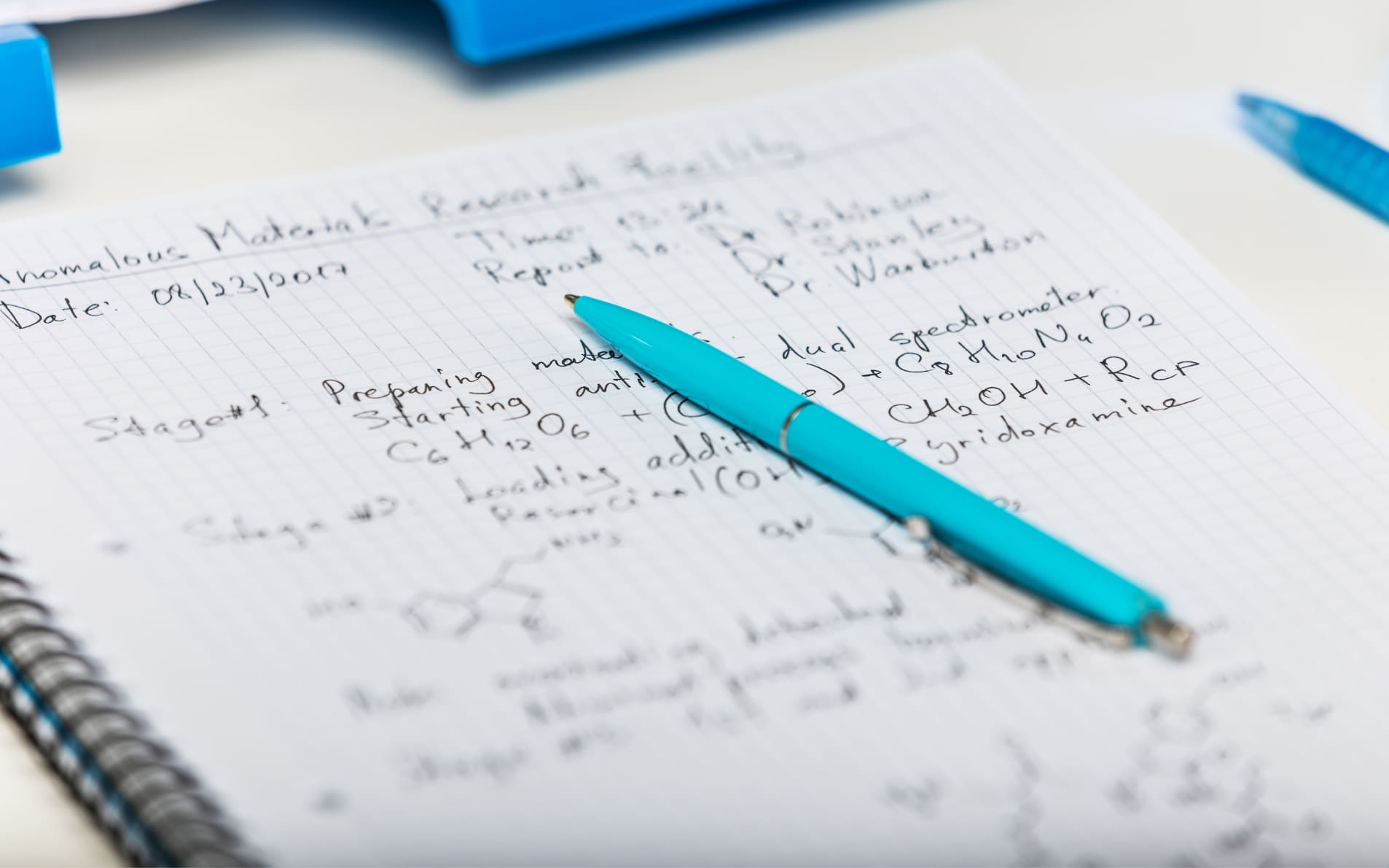
How to Write a Chemistry Lab Report: A Guide for Students
Taking a step into the chemical laboratory is like entering an arena of boiling vessels, vivid liquids and complex reactions. But beyond the exciting experiments lies a crucial requirement: the chemistry lab report. For many students, this document is like a challenging puzzle because it transforms raw data into scientific discoveries. Fear not, aspiring chemists! This manual will demystify the process and arm you with necessary skills to write a top-notch lab report for chemistry.
Demystifying the Chemistry Lab Report: Your Expert Guide
Consider a chemistry lab report to be the linkage between your investigation and the reader. It’s a well-developed story, which in great detail describes your research path from the hypothesis to conclusion. Its main function is to make your discoveries legible, short and persuasive. Keep in mind that you are not only telling the story of your experiment but also establishing a strong case supported by convincing evidence, thus do not forget about proper lab report format chemistry.
Here’s the good news: Writing a lab report is not an issue of literary talent but rather about scientific accuracy and arrangement. Through a well-established framework and standard writing rules, you can turn what was once seen as technical information into an enthralling scientific saga.
The Building Blocks of a Lab Report For Chemistry
Imagine a sturdy building. It finds its strength in a solid foundation and meticulously interwoven structure. Likewise, a high-quality chemistry lab report is based on a thorough plan as well as carefully interconnected components. Let’s explore the essential building blocks:
- Title Page For Chemistry Lab Report: Your report’s first impression. It should be informative and brief, providing the experiment title, your name, date of submission and relevant course code as appropriate to details available.
- Abstract: After a chemistry lab report title page goes a brief summary, it gives an overview of your study. In short describe the objective, methodology and findings of key conclusions. Consider it a movie trailer – enticing enough to make the reader want more.
- Introduction: Frame your scientific drama. Give a brief overview of the problem you looked into, citing relevant studies and concepts used. Define clearly your research question or hypothesis that is the main driving force of your experiment.
- Materials and Methods: This section is your recipe. List the ingredients (chemicals, materials) and steps you performed. Be descriptive enough so someone could repeat your experiment. Consider it a cookbook for scientific cooking.
- Results: Present your findings objectively. Use tables, graphs and figures in your data to better organize it. Remember, only numbers will not speak for themselves, provide a short summary and point out what changes or aspects are surprising.
- Discussion: This is where we make it happen. Provide a detailed analysis of your findings, showing how they correspond with your hypothesis and the overall scientific arena. Provide potential limitations and sources of inaccuracy to reflect your understanding of the experiment’s intricacies.
- Conclusion: Discuss your main findings and their importance. Was your experiment validating the hypothesis? Restate the key points and their relationship to your original research question. This is not the place for new information – continue with tying up loose ends.
- References: Acknowledge the sources you’ve consulted. Apply standardized formatting based on your instructor’s instructions.
- Appendix (Optional): Include any supplementary info, calculations or figures that would be helpful but might slow down the flow of the primary report.
Keep in mind, every block has a particular function but the way they are working together creates such an interesting story. If you keep to the same structure and faithfully fill each section, as much progress toward a lab report that pleases both your instructor and inner scientist.
Read the following sections to learn more as we explore each of these building blocks in further detail with practical strategies that will help you refine your writing, analyze data, and overcome challenges encountered while preparing a chemistry lab report. Keep in mind that, if you are willing to put in a bit of dedication with meticulous planning this once formidable task can become an academic adventure.
Crafting a Top-Notch Chemistry Lab Reports: Essential Requirements
More than just bubbling potions and transfixing color changes, conquering the chemistry lab requires overcoming other challenges. It is translating those exciting experiments into a narrative that hooks – the chemistry lab reports. This guide will provide you with the necessary tools to make an impeccable report, which meets all of the requirements and reveals your scientific personality.
Accuracy and Clarity Are the Foundation of Your Report
- Calibration is key: Never underestimate the value of calibration. A small deviation from a pH meter or balance will cause failure to your whole experiment. And it is imperative to calibrate your instruments regularly and record the procedure for data reliability.
- Keep a paper trail: Lab notebooks are your scientific friends. Write down every part of the experiment process where you observed something, there were any unexpected events and possible sources of error. It is this comprehensive logbook that makes the results analysis and identification of inconsistencies possible.
- Double-check, then double-check again: Although human error is inevitable, vigilance can mitigate its effects. Re-verify your numbers, measurements and transcriptions itself. Find someone to review your data before moving on.
Organization and Structure: Building a Coherent Story
- Visual storytelling: Don’t underestimate the power of visuals. Use for chemistry lab report cover page the simple figures, tables and graphs to represent the data. Use different types of charts based on the characteristics of your findings. A good graph is capable of saying it all with a simple glance.
- Headings and subheadings are your friends: Consider dividing your experiment into manageable parts with distinct headings and subheadings. This leads the reader through your story and ensures that he does not get a lot of information at once. One may also think to apply numbering systems for complicated procedures or involved data sets.
- Conciseness is king: This detail might be excessive, but thoroughness is vital. Keep your writing concise and to the point by focusing on what is most important within each section. Remember, your reader’s time is valuable, so respect it by communicating efficiently.
Analysis and Interpretation – Unveiling the Meaning
- Statistical savvy: Statistical tests are your tools of analysis. Discover how you can apply t-tests, chi-squared tests and ANOVA to evaluate the significance of your data. These methods provide a greater degree of rigor to your conclusions and show that you understand the principles behind statistics.
- Error bars and honesty: No experiment is perfect. Discuss the constraints of your methodology and consider potential sources of bias affecting your outcomes. This highlights your scientific honesty and the reader is able to critically appraise your results.
- Think beyond the numbers: Report only the described facts – interpret what these figures mean! Seek to identify trends, patterns and also unanticipated anomalies. Consider the correlation between emerging findings and established theories as well as existing studies. This makes your report more than just a data dump; it provides actual value addition to the field of scientific discussion.
Painting with Words: Communication and Style
- Jargon in moderation: Technological terminology has its place, but don’t overload with it. Be mindful that your audience is not necessarily a group of chemists. Simplify complicated ideas, using everyday examples and analogies where they help.
- Active voice for the win: Active voice is more than just a rule of grammar; it’s an instrument for creating stories. Such phrases as ” The experiment was carried out…” should be avoided since they are passive and non-engaging. Rather, adopt an active voice such as “ We performed the experiment” to impart dynamism and lucidity in your piece of work.
- Punctuation with a purpose: Although minor, comma and semicolon placement is important as it changes the flow and readability of a text. Taking punctuation as a weapon, your sentences would be precise and proper.
Keep in mind, your words are the lines that draw your scientific narrative. The appropriate choice of the words will make your report a work of art with clear and convincing messages.
See It in Action: Real-World Example Chemistry Lab Report
Theory and structure are good, but sometimes it is better to see how things work in practice. Let’s dive into the real world of chemistry lab reports with two examples, showcasing different research areas and writing styles:
Example chemistry lab reports 1: Titration Triumphs: Acid-Base Equilibria
In this report, I go into the details of acid-base reactions, especially how to measure concentration acetic in vinegar by titration. Picture clean, sterile lab coats with precise burette readings and the excitement of watching as the indicator changes color toward completion. The report describes every step, including preparing standard solutions to calculating the pKa of acetic acid. Tables offer a clear representation of data points, while concise graphs help visualize the titration curve. The discussion section connects observed trends to chemical principles by discussing buffer capacity and dissociation constants, among others. This work stands out in terms of its clarity, organization and ability to make abstract principles clear within a single narrative.
Chemistry lab report sample 2: Chromatography Capers – Identifying Unknown Compounds
This test report provides a detective mission, relying on thin-layer chromatography to find unknown organic compounds in plant extracts. Consider colorful liquids on a silica gel plate, the anticipation of processing chromatograms and delight at comparing Rf values with reference standards. The report provides detailed accounts of the process for extracting, chromatographic technique and visualization methods applied. Figures present the ready chromatogram with comparison reference solutions, and a detailed table provides data on retention factors along with possible compounds identification. The techniques developed in the discussion section excel at interpreting data with caution, taking into account possible sources of error and suggesting additional experiments for final identification. This report is exceptional in terms of visual storytelling, comprehensive analysis and the interpretation of scientific evidence for deriving significant conclusions.
These are just two examples, and countless others explore diverse chemistry topics from kinetics and spectroscopy to synthesis and environmental analysis. Each report, crafted with care and precision, adds a valuable piece to the puzzle of scientific knowledge.
Final Touches: Wrapping Up Your Lab Report
Now, when you already know how to write a lab report for chemistry and it is almost done, you need to polish up your masterpiece. Remember, these final steps can elevate your report from good to exceptional:
- Proofread with a hawk’s eye: This will help readers focus on your scientific message and not be distracted by typos or grammatical errors.
- Format for perfection: Follow any chemistry lab report format requirements given by your instructor or course. Attention to detail can be evidenced by the use of uniform fonts, suitable margins, and correct referencing.
- Presentation matters: First impressions count! Appropriate clear font sizes; well-spaced formatting, engaging figures and tables can be used to create reader friendly documents.
- Embrace feedback: Seek feedback from your instructor or peers with no fear. Constructive criticism can point out the places you need to improve in your lab reports for chemistry.
As stated earlier, your lab report chemistry is a reflection on scientific rigor and communication. With these final touches, it is guaranteed your results will spark cleanliness, precision and proficiency. As you prepare the report, reflect on how far your journey has come. You’ve turned raw data into an engrossing story, and thus you have taken part in the continuous saga of scientific inventions.






